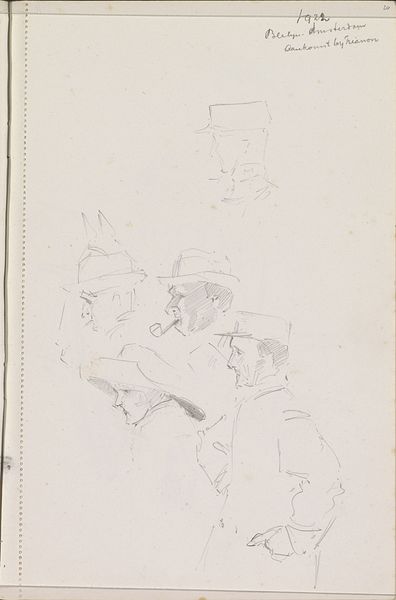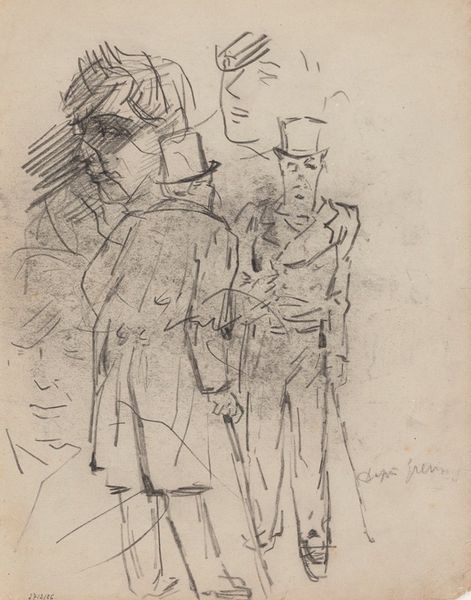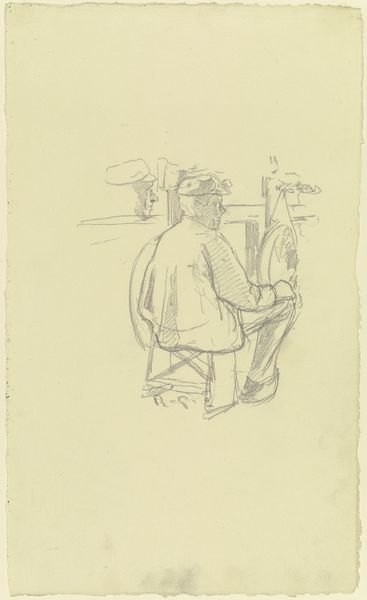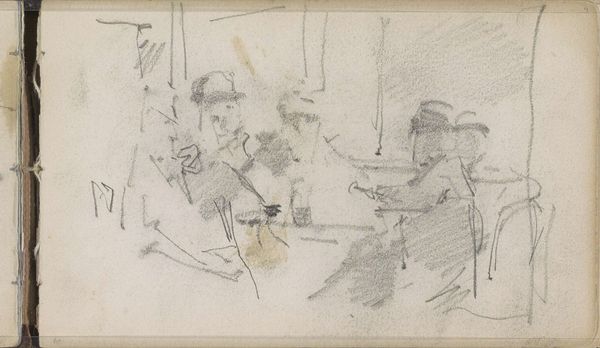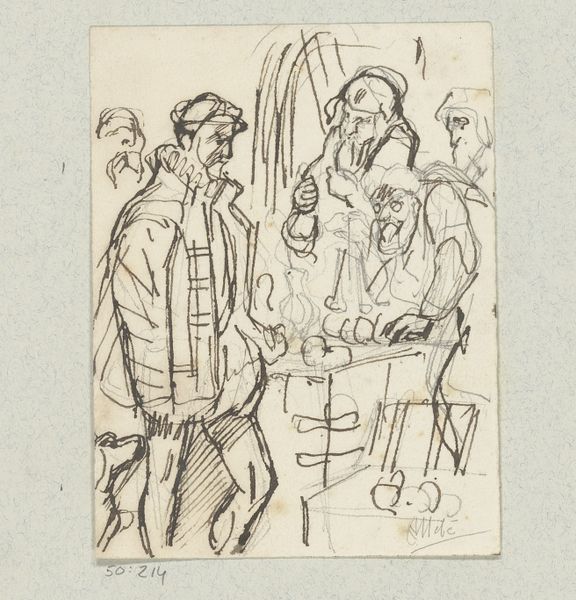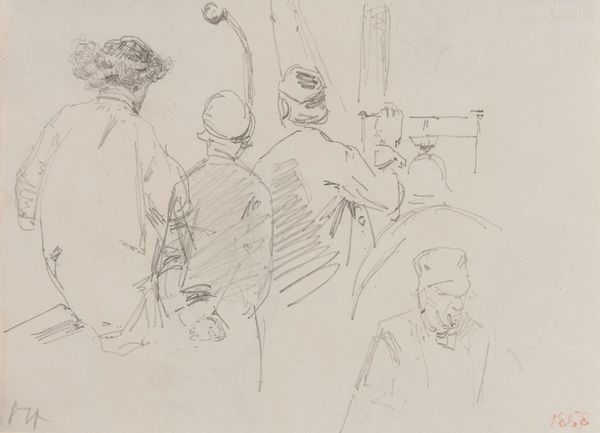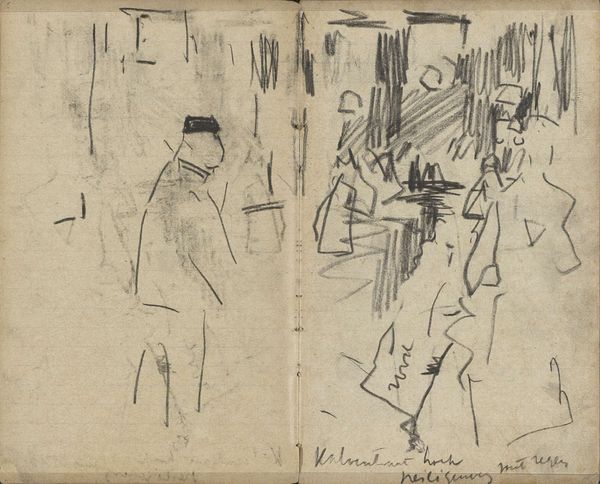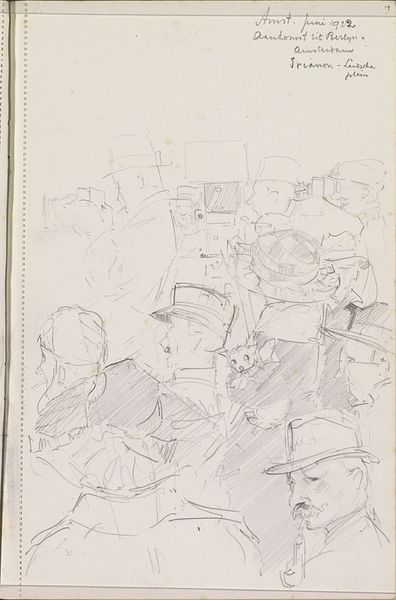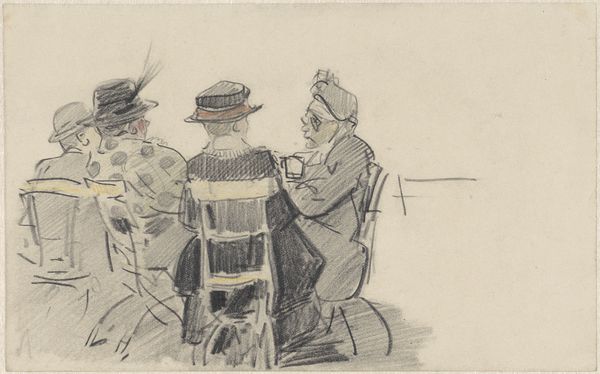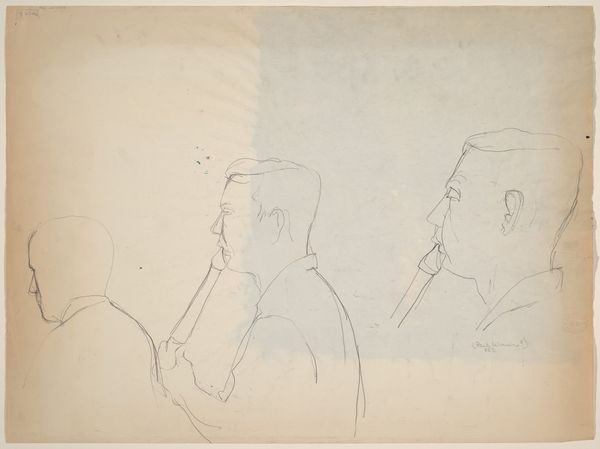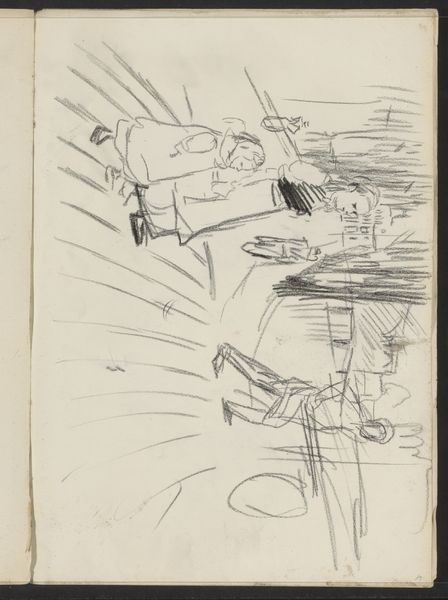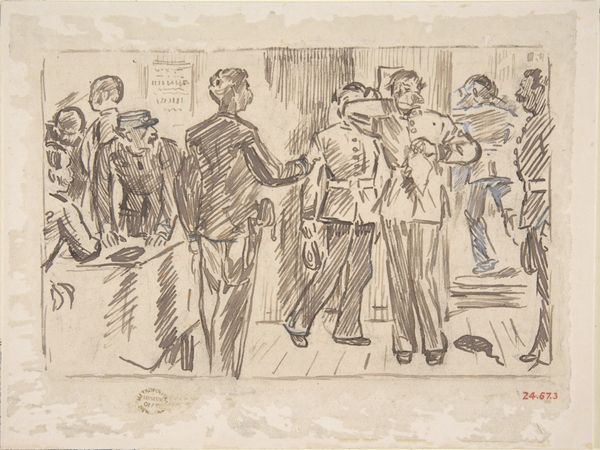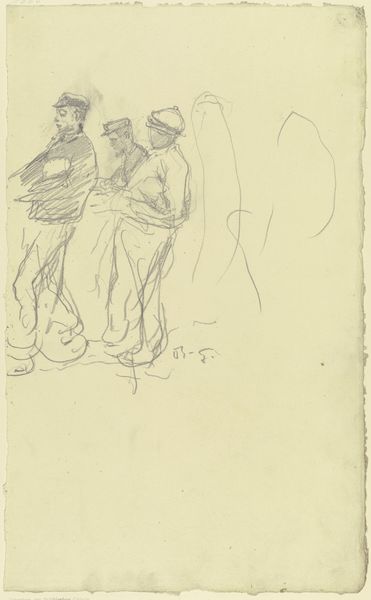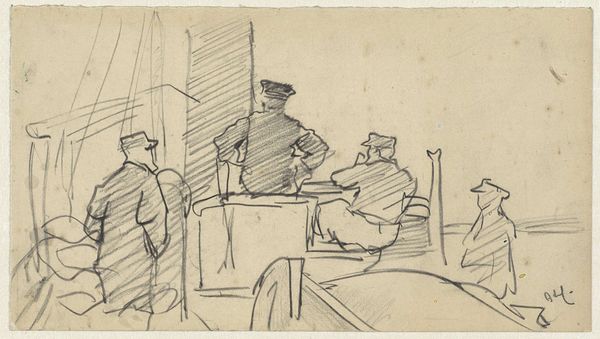
drawing, paper, pencil
#
drawing
#
ink drawing
#
paper
#
pencil
#
expressionism
Copyright: Public Domain
Curator: I see weariness, perhaps resignation. The sketch is so raw, almost unfinished. Editor: Indeed. What we have here is Max Beckmann's "Drei Männer, auf Stühlen sitzend," or "Three Men Sitting on Chairs," created in 1915. The work is done with pencil and ink on paper. Curator: The immediacy of the materials is striking. The scratch of the pencil on paper… You can almost feel the artist’s hand moving quickly. Were materials like this easily attainable for artists? Or was even getting one's hands on basic materials part of the social act? Editor: Absolutely, the social conditions in 1915 Germany definitely informed material access, and in turn, informed what sort of work could be made. However, the raw feel may be partly intentional—Beckmann uses sketch work and studies to portray soldiers frequently. There is almost a sense of visual reportage to these rapidly drawn characters. Consider the institutional forces at play. Museums and galleries were very invested in supporting patriotic sentiments at the time. Curator: He has really captured something with very few strokes. Is the rapid style something that reflects his broader philosophy of image making? Or are we seeing war rationing and similar societal restraints mirrored here? Editor: It reflects both! Expressionism rejected academic polish. But rationing and limited material also reshaped artistic habits and material availability. Look closely; each figure is delineated by strong, dark outlines, but they remain distinct. You can see the Expressionist idea of alienation in this stark treatment, where men are reduced to types, distinguished not by their humanity but by the harsh lines of their isolation. And don't forget that Beckmann himself served as a medical orderly in World War One and was deeply affected by the war. It had to affect how the art would be shaped, literally, under these pressures. Curator: I think seeing work like this helps us understand art's production at various socioeconomic moments and in the artist's everyday interactions with others. We are used to assuming great artists simply materialize images. Editor: Yes, situating works within such social and political forces deepens our sense of historical context and offers different, potentially even new, ways to assess art's lasting significance. Thank you.
Comments
No comments
Be the first to comment and join the conversation on the ultimate creative platform.
